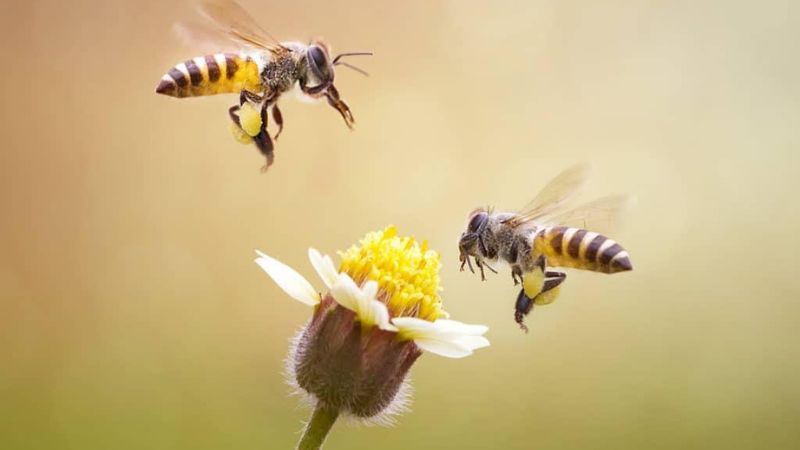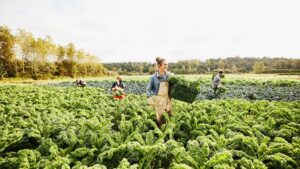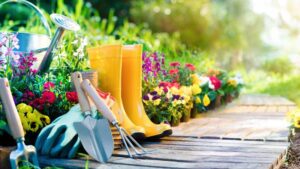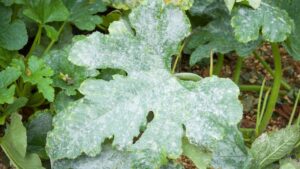Welcome to our comprehensive guide on attracting pollinators to your farms and gardens! Pollinators like bees, butterflies, and birds play a crucial role in the ecosystem by facilitating the reproduction of plants. However, because to habitat loss, pesticide use, and climate change, their numbers are decreasing. By implementing the 11 Ways To Attract Pollinators To Your Farms & Gardens, you can create a thriving environment that supports these essential creatures while also boosting the productivity of your crops and flowers. From selecting pollinator-friendly plants to creating habitat structures, we’ll explore eleven practical ways to invite these beneficial insects and animals into your outdoor spaces. Let’s dive in and learn how to transform your garden into a haven for pollinators!
11 Ways To Attract Pollinators To Your Farms & Gardens
1. Choose Native Plants
Selecting native plants is crucial for attracting local pollinators to your farms and gardens. Native plants have co-evolved with local pollinators, making them well-adapted to each other’s needs. These plants provide the necessary nectar, pollen, and habitat for pollinators to thrive. Research native plant species in your region and incorporate them into your landscape design to create a pollinator-friendly environment.
Also Read: 10 Ways To Control Weeds Without Chemicals
2. Create Diverse Habitats
Diversity is key to attracting a wide range of pollinators. Design your farm or garden to include various habitats such as meadows, woodlands, and wetlands. Each habitat will attract different pollinator species, ensuring a diverse and resilient ecosystem. Incorporate features like flowering shrubs, grasses, and trees to provide food and shelter for pollinators throughout the year.
3. Plant Flowers with Different Blooming Times
Planting a variety of flowers that bloom at different times of the year ensures a continuous food source for pollinators. Early blooming flowers like crocus and snowdrops provide essential nourishment for pollinators emerging from hibernation, while late-season blooms such as asters and goldenrods sustain them through the fall. Plan your garden to have a succession of blooms from spring to fall, ensuring a constant supply of nectar and pollen.
4. Provide Water Sources
Pollinators need water for hydration and regulating body temperature. Incorporate water features such as birdbaths, shallow dishes, or small ponds into your farm or garden to provide drinking and bathing spots for pollinators. Ensure the water source is shallow and has perches or rocks for insects to land on safely. Regularly clean and refill the water to prevent contamination and ensure its availability year-round.
5. Minimize Pesticide Use
Pesticides can be harmful to pollinators, impacting their health and reproduction. Instead of relying on chemical pesticides, practice integrated pest management (IPM) techniques to control pests while minimizing harm to beneficial insects. Use natural predators, insecticidal soaps, and physical barriers to manage pests effectively without harming pollinators. Choose organic and pesticide-free methods to maintain a healthy and balanced ecosystem.
6. Provide Nesting Sites
Many pollinators, such as solitary bees and butterflies, require specific nesting sites to lay their eggs and raise their young. Create nesting habitats by leaving patches of bare soil, providing nesting materials like hollow stems and twigs, or installing bee houses and butterfly boxes. These structures offer shelter and protection for pollinators during their reproductive cycles, contributing to their population growth and sustainability.
7. Incorporate Host Plants for Caterpillars
If you want to attract butterflies to your farm or garden, it’s essential to provide host plants for their caterpillars. Different butterfly species have specific host plants where they lay their eggs, and their caterpillars feed exclusively on these plants. Research native host plants for butterflies in your area and include them in your landscape. By supporting the entire lifecycle of butterflies, you’ll ensure a healthy population of these beautiful pollinators.
8. Practice Sustainable Gardening Techniques
Implementing sustainable gardening practices benefits both pollinators and the environment. Use compost and organic fertilizers to enrich the soil and promote healthy plant growth. Mulch around plants to conserve moisture and suppress weeds, reducing the need for irrigation and weed control chemicals. Rotate crops and practice crop diversity to prevent soil depletion and pest buildup. By caring for the soil and surrounding ecosystem, you’ll create a thriving environment for pollinators.
9. Create Windbreaks and Shelterbelts
Windbreaks and shelterbelts not only protect crops from strong winds but also provide shelter and nesting sites for pollinators. Plant rows of trees, shrubs, or tall grasses along the edges of your farm or garden to create natural barriers. These protective barriers reduce wind velocity, create microclimates, and offer refuge for pollinators from harsh weather conditions. Choose diverse plant species to maximize the benefits for both pollinators and crops.
10. Encourage Community Involvement
Engage with your local community to promote pollinator conservation efforts. Organize workshops, educational events, or volunteer opportunities to raise awareness about the importance of pollinators and how individuals can help protect them. Collaborate with schools, community gardens, and conservation organizations to create pollinator-friendly habitats in public spaces. By working together, you can make a significant impact on pollinator populations and foster a sense of stewardship for the environment.
Also Read: 7 Tips For Harvesting And Storing Organic Produce Properly
11. Monitor and Evaluate
Regularly monitor pollinator activity in your farm or garden to assess the effectiveness of your pollinator conservation efforts. Keep records of pollinator sightings, flower visits, and nesting activities to track changes over time. Use this data to adjust your management practices and improve habitat quality for pollinators. By actively monitoring and evaluating your efforts, you can ensure long-term success in attracting and supporting pollinators on your farm or in your garden.
Conclusion
Incorporating pollinator-friendly practices into your farming and gardening endeavors not only benefits the environment but also enhances the beauty and productivity of your outdoor spaces. By following the tips outlined in this guide, you can create an inviting habitat that attracts bees, butterflies, and other pollinators. Together, we can make a positive impact on biodiversity and ensure the continued health of our ecosystems. So, roll up your sleeves, plant some flowers, and watch as your garden becomes a buzzing hub of activity for these essential creatures. Let’s work together to protect and preserve our pollinators for generations to come!
FAQs
How can I attract bees to my garden?
Plant a variety of native flowers rich in nectar and pollen, provide a water source, and minimize pesticide use.
What are some butterfly-friendly plants?
Butterfly bush, milkweed, coneflower, and lantana are excellent choices for attracting butterflies with their vibrant blooms and nectar-rich flowers.




